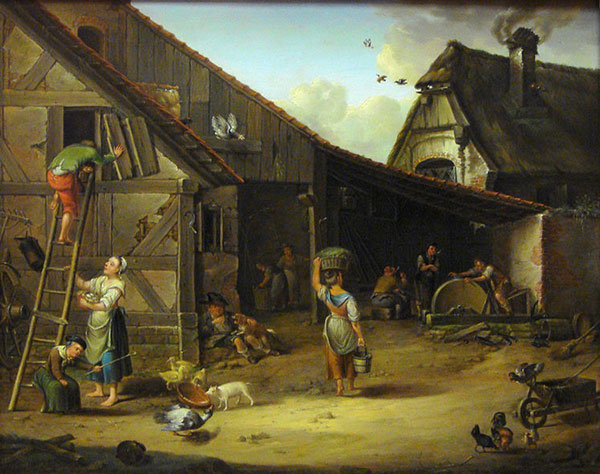
1794 Johann Ludwig Ernst Morgenstern (1738-1819) - Bauernhof (A farm)
| Farm Animals | |
| HOME - BLANCK INTRODUCTION - GOEHLE INTRODUCTION - PETERMANN INTRODUCTION - Germany Introduction - German House Exteriors - German House Interiors - Crops - Attire | |
|
Farm Animals A cottager's farm (that is a small farm) in Narjesbergen in 1871 had two oxen, six cows, two sows, forty sheep, and forty bee-hives. |
 |
|
|
Morgenstern Bauernhof anagoria - public domain 1794 Johann Ludwig Ernst Morgenstern (1738-1819) - Bauernhof (A farm)
| |
| Oxen An ox is a cattle drained as a draft animal. It is frequently a castrated male. | |
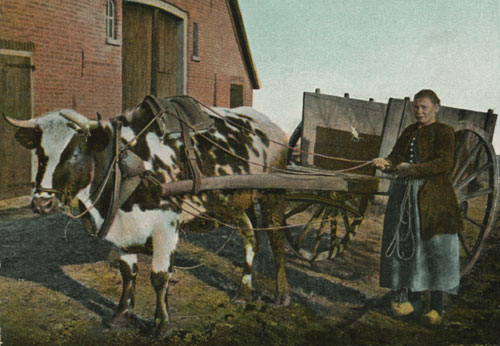 |
Not posted
|
| Postcard collection of Maggie Land Blanck | |
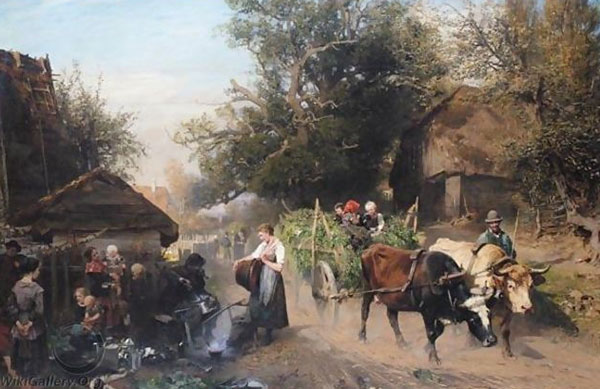 |
| Paul Friedrich Meyerheim Der Kesslflicker (The Tinker) Public domain |
| Cattle
| |
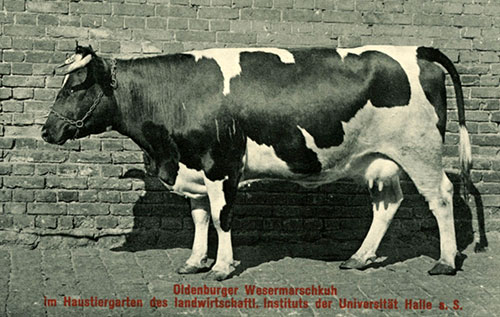
| |
| Postcard collection of Maggie Land Blanck, 2013
| |
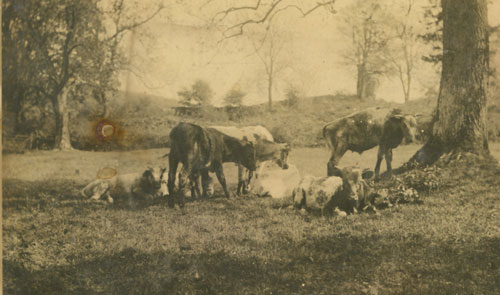 |
Postmarked Berlin 1903
|
| Postcard collection of Maggie Land Blanck | |
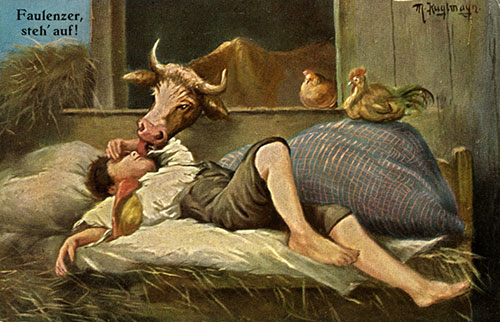
| |
| Postcard collection of Maggie Land Blanck, 2013 Faulenzer steh'auf! (Loafers get up!) German farm houses were generally of the hall variety. One end was the living quarters of the family and the other end was the living quarters of the family's animals. See Interiors of German Farm Houses
| |
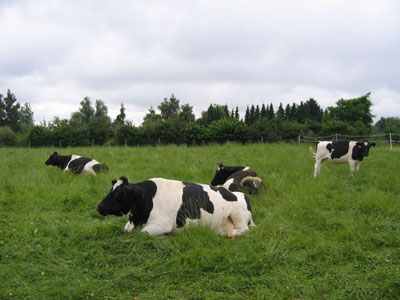 |
|
| Freilichtmuseum am Kiekeberg, Photo by Maggie Land Blanck |
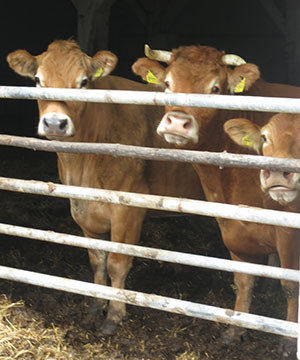 |
|
| Photo by Maggie Land Blanck, 2015, Bokendorf |
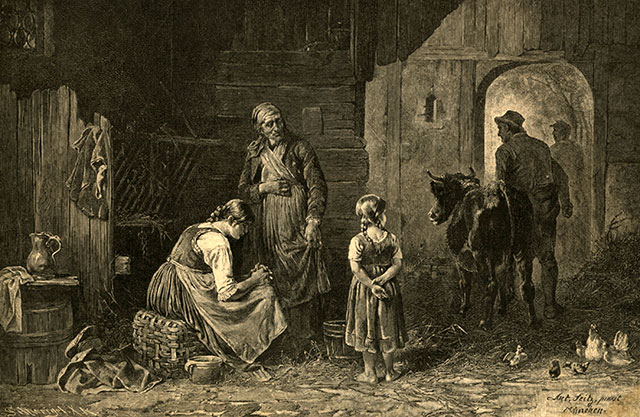
| |
| Print collection of Maggie Land Blanck, 2013 Die gepfändete kuh (The Repossessed Cow) from a painting by Anton Seitz (1829-1900) The title would suggest that the cow was being bought on time payments which were not met. Notice the woven seat, the wooden bucket and the crockery pitcher.
| |
| Horses Horses were used to pull carriages and coaches. Horse racing was common in certain sections of Germany like Bavaria. Horses were also used by the military. Horses were not commonly used or owned by small farmers in the south of Germany. An Encyclopedia of Agriculture: Comprising the Theory and ..., Volume 1 By John Claudius Loudon Agriculture in Germany, 1825 States:"Horses are the most common animals of labor in the north and west of Germany, oxen in the south"
Horses were said to be good for road work and oxen for field work.
| |
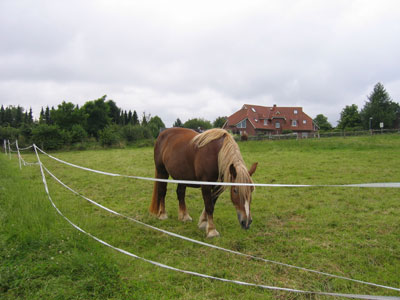 |
|
| Freilichtmuseum am Kiekeberg, Photo by Maggie Land Blanck | |
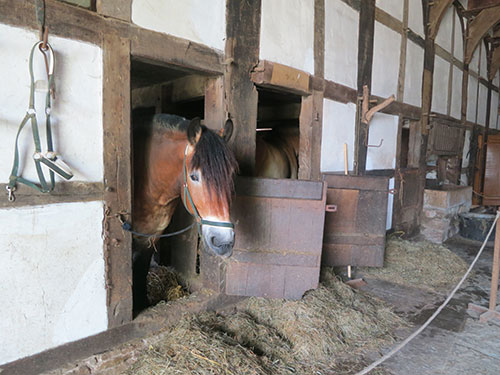 |
|
| Photo by Maggie Land Blanck, 2015, Detmold Outdoor Museum These stables were in a large village barn at the Detmold Outdoor Museum.
| |
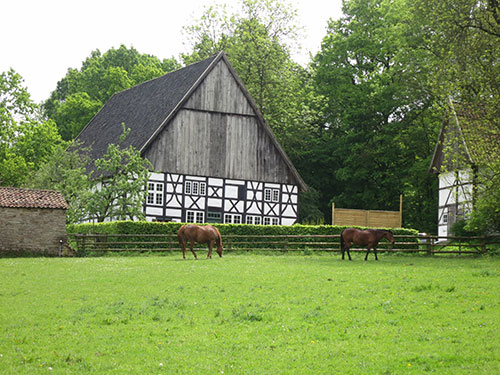 |
|
| Photo by Maggie Land Blanck, 2015, Detmold Outdoor Museum |
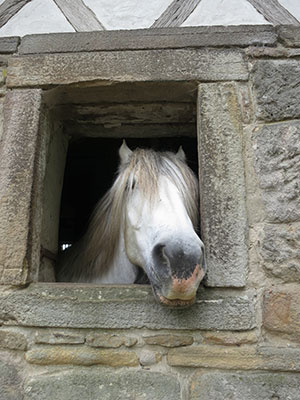 |
|
| Photo by Maggie Land Blanck, 2015, Detmold Outdoor Museum | |
| Sheep Sheep were kept for their wool.
| |
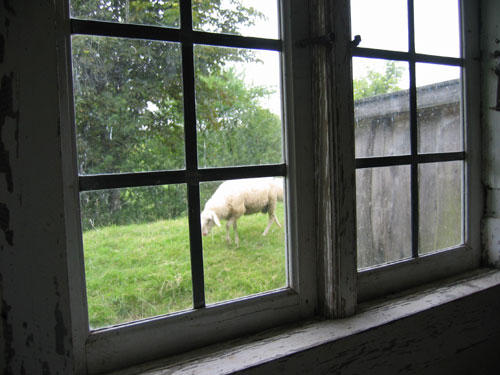 |
|
| Freilichtmuseum am Kiekeberg, Photo by Maggie Land Blanck | |
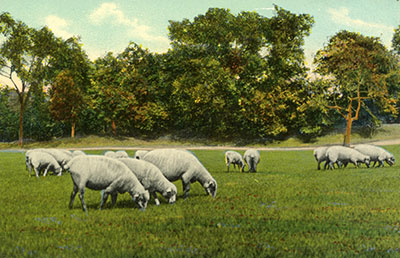 |
|
| Collection of Maggie Land Blanck
| |
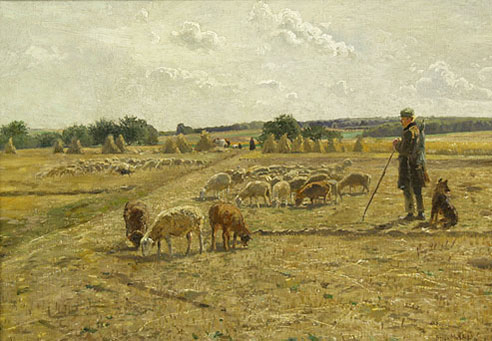 |
|
| Wikimedia Commons
Hugo Mühlig - Felderlandschaft mit Hütejunge (Landscap with shepard) | |
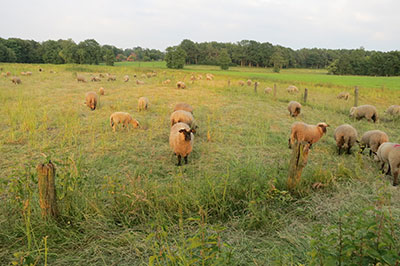 |
|
| Photo Maggie Land Blanck, June 2013
Sheep in a field just outside of the town of Ganderkesee.
|
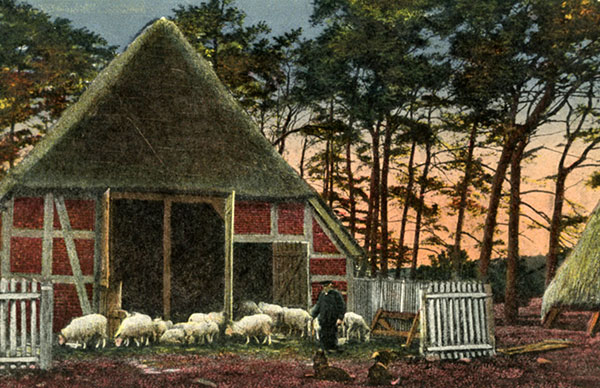 |
|
| Postcard collection Maggie Land Blanck, 2014 | |
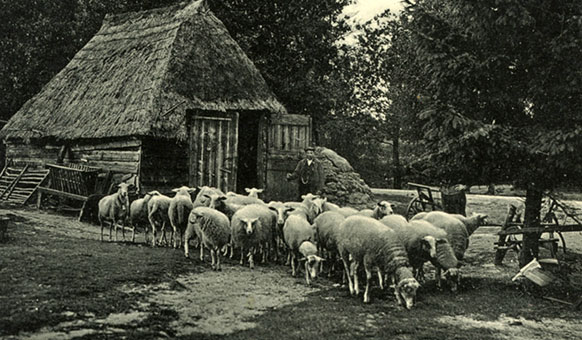 |
|
| Postcard collection Maggie Land Blanck, 2014 Nunspeet-Schaapskool | |
| Fowl
| |
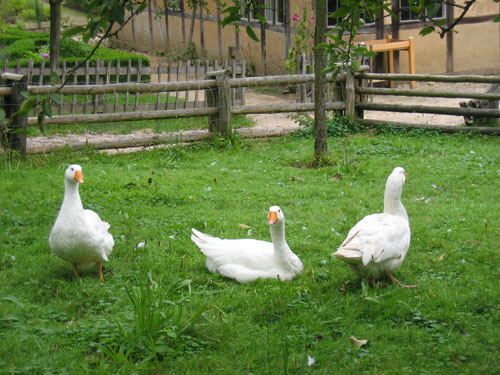 |
|
| Freilichtmuseum am Kiekeberg, Photo by Maggie Land Blanck |
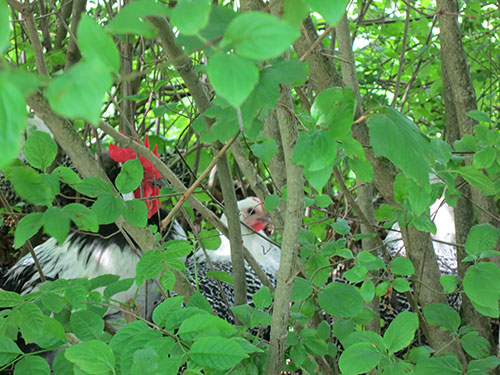 |
|
| Photo by Maggie Land Blanck, 2015, Detmold Outdoor Museum | |
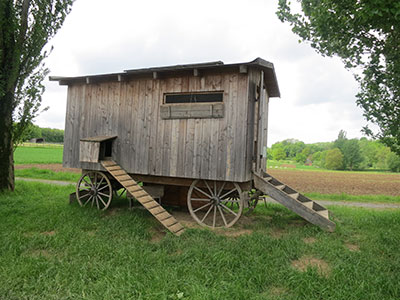 |
|
| Photo by Maggie Land Blanck, 2015, Detmold Outdoor Museum The chickens shown above lived in this chicken wagon. I don't know why they should live in a wagon rather than just in the farmyard. | |
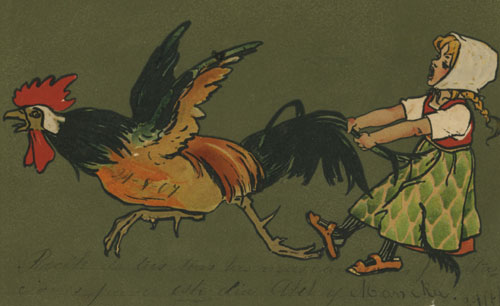 |
|
| Postcard collection Maggie Land Blanck | |
|
Geese Geese were bred in large numbers in Germany, especially in Westphalia, Franconia and Bavaria. They were raised for their meat, quills and feathers which were used in upholstery and bedding. Until the introduction of steel pens in the the early 1800s quills were used for writing. Goose down was used in feather beds. Smoked goose breast was a comercial item. In the late 1880s geese were exported to England Holland and Italy. A great many of the inhabitants of this, and other towns in Germany, keep geese, which, I suppose by some municipal regulation, are taken out every morning, to feed on the commons. The man who takes charge of them, goes through the town in the morning, blowing a horn, on hearing which the keepers of geese turn them out. When all are collected, they are taken to the common: and at night the man brings them back to the owners. A similar practice prevails in regard to the pigs, which are summoned by the cracking of a whip, and taken in like manner to the common. The abundance of geese enables the people to indulge in the luxury of the finest feather beds, one under, and one over them, with a pair of sheets only between them.Goose feathers and quills were plucked while the bird was still alive. Quills and down feathers were obtained in the spring by plucking the feathers from live birds. It is said that the feathers were plucked when "ripe" - that is when the bird was about to molt (or shed its old feathers). At this point the partially loosened feathers were removed. In a large flock, all the birds did not molt at the same time so the feather plucking could occur over a period of several weeks. Old geese were said to submit quietly to the procedure but goslings were noisy and uncooperative. The feathers soon grew back. After the harvest geese were set out in the fields to stubble fields to glean any grain that may remain. Goose was the traditional meal for Michaelmas day.
| |
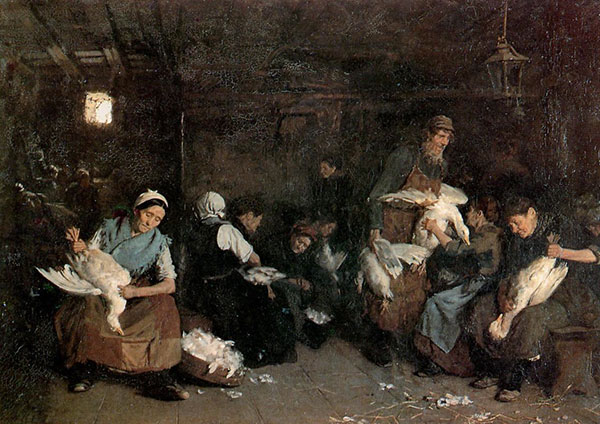 |
|
| Women Plucking Geese, Max Lieberman, 1871, public domain
The geese being plucked are live. Ducks Tame ducks were kept to be eaten. They were also useful in pest controle. They ate caterpillars, snails and slugs which infested crops. | |
| Swine
| |
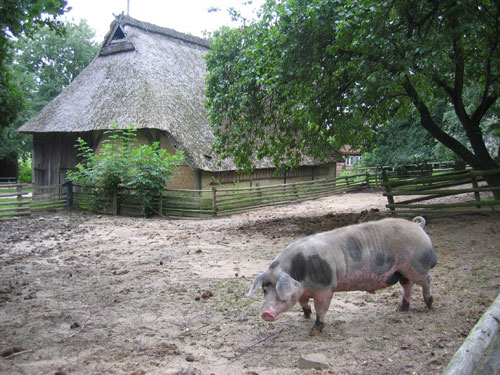 |
|
| Freilichtmuseum am Kiekeberg, Photo by Maggie Land Blanck |
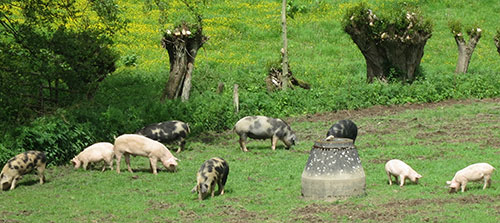 |
|
| Photo by Maggie Land Blanck, 2015, Bellerson |
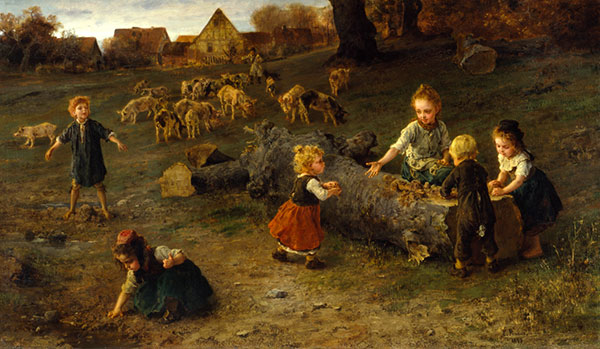 |
|
| Ludwig Knaus - public domain
Hogs and children.
| |
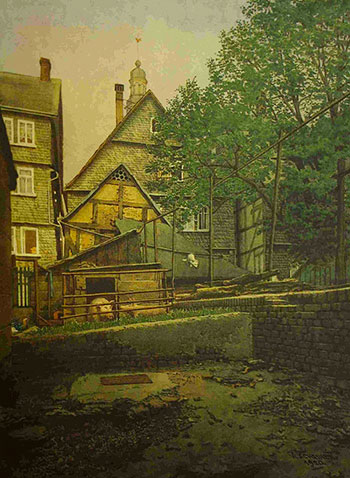 |
| Wilhelm Scheiner Altstadtwinkel Siegen (Public Domain)
|
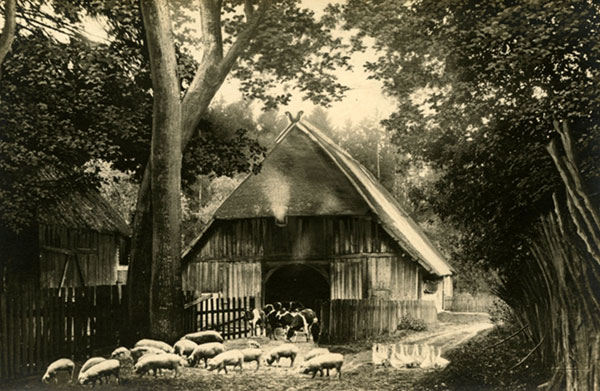 |
|
| Postcard collection Maggie Land Blanck, 2014
Hogs, Geese, and calfs.
| |
| Bees
| |
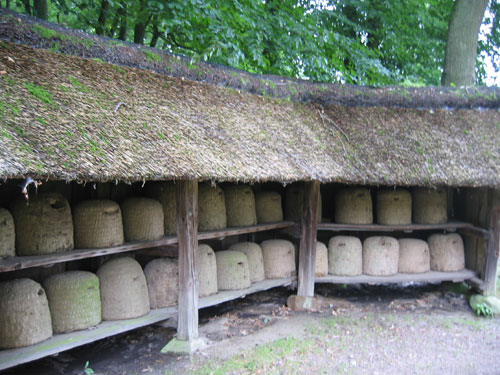 |
|
| Freilichtmuseum am Kiekeberg, Photo by Maggie Land Blanck |
| If you have any suggestions, corrections, information, copies of documents, or photos that you would like to share with this page, please contact me at maggie@maggieblanck.com | |
| Please feel free to link to this web page. You may use images on this web page provided that you give proper acknowledgement to this web page and include the same acknowledgments that I have made to the provenance of the image. Please be judicious. Please don't use all the images. You may quote my original text from this web page and use any cited quotes on this web page provided you give proper acknowledgement to this web page and include the same acknowledgments that I have made to the provenance of the information. Please do not cut and paste the whole page. You may NOT make use any of the images or information on this web page for your personal profit. You may NOT claim any content of this web page as your original idea. Thanks, Maggie |
| This page was created in 2005: Latest update, March 2018 |
| HOME - BLANCK INTRODUCTION - GOEHLE INTRODUCTION - PETERMANN INTRODUCTION - Germany Introduction - German House Exteriors - German House Interiors - Crops - Attire - Landscape |
|
|